In the world of gardening, succulents often steal the spotlight with their unique forms and resilient nature, making them a favorite among both beginners and seasoned plant enthusiasts. While many associate these sturdy plants with bright, sunlit environments, a fascinating subset thrives in low-light conditions, opening up new possibilities for indoor gardeners and those with less than ideal lighting.
For the novice gardener, the allure of low-light succulents lies in their ability to adapt and flourish in spaces where sunlight is a scarce luxury. Likewise, experienced horticulturists can appreciate the challenge and satisfaction of cultivating these remarkable plants, expanding their green sanctuaries into cozier corners of their homes.
This article will guide you through a curated selection of succulents perfect for dim environments, offering practical tips for their care and maintenance. You’ll discover how to identify the right species, understand their specific needs, and create a thriving low-light oasis that enhances your living space with ease.
Understanding Low Light Environments
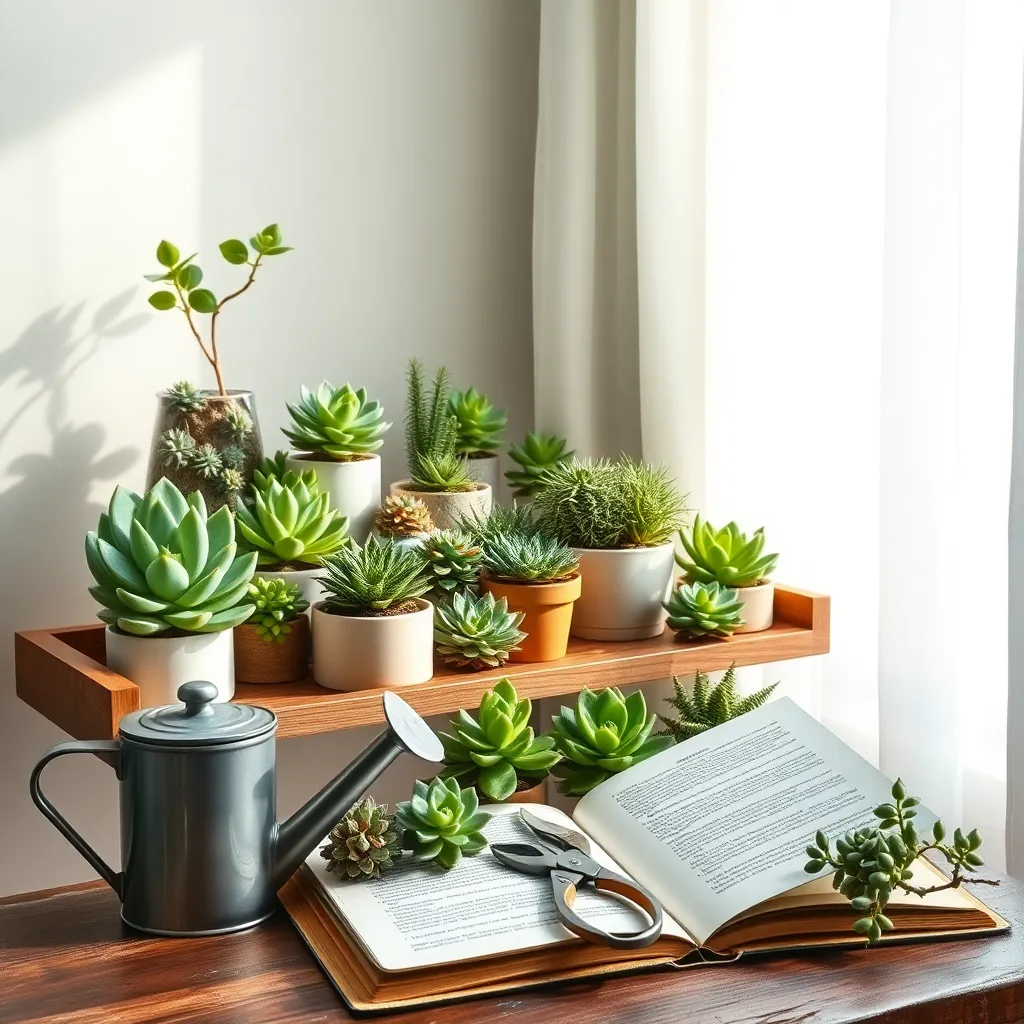
In low light environments, it’s important to understand that light levels are significantly reduced compared to brighter areas. This means succulents will need some adjustments to their typical care routines to thrive.
Start by choosing succulents that are known for their tolerance to low light conditions. Some options include the Haworthia, Gasteria, and certain types of Aloe, which can adapt more easily to reduced light.
Ensure you’re using a well-draining soil mix, which is crucial for succulents in low light. You can create your own mix by combining equal parts of potting soil, coarse sand, and perlite to enhance drainage and prevent root rot.
Watering requires special attention, as succulents in low light need less frequent watering. Allow the soil to dry out completely between waterings, and reduce the watering frequency to approximately once every two to three weeks.
Consider rotating your succulents every few weeks to ensure they receive even light exposure. This will help prevent them from leaning toward the light source and maintain their symmetrical shape.
For advanced gardeners, introducing artificial lighting with grow lights can be a game-changer. Position the lights about 12 inches above the plants for optimum results, and aim for 12-14 hours of light daily to supplement natural light.
Top Succulents for Dim Spaces
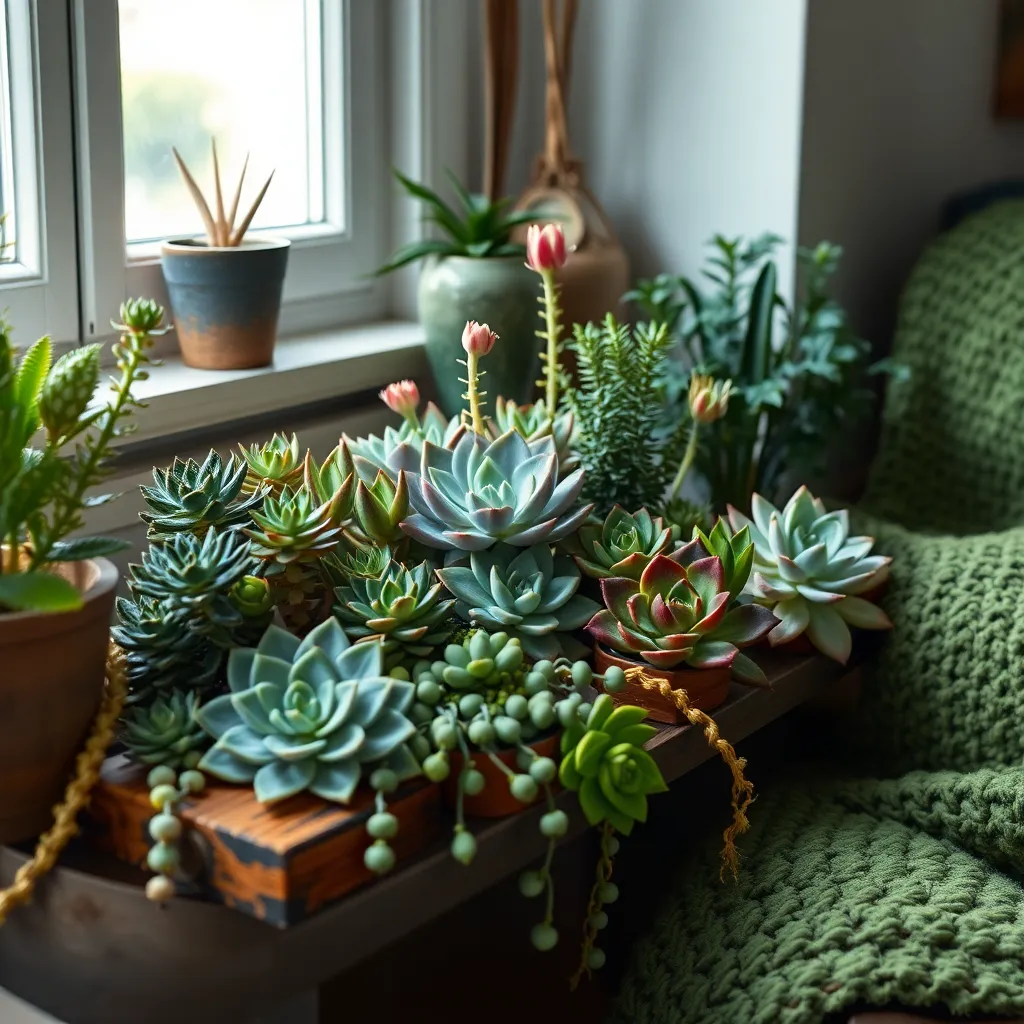
For those seeking greenery in dim corners, Sansevieria trifasciata, commonly known as the snake plant, is an excellent choice. This hardy succulent can tolerate low light conditions and requires minimal care, making it ideal for busy gardeners.
Another great option is the Haworthia species, which thrive even in indirect light. These compact succulents require well-draining soil, so consider using a cactus mix to ensure proper drainage.
When considering watering needs, remember that low-light environments reduce water evaporation. Water your succulents sparingly, allowing the soil to dry out completely between waterings to prevent root rot.
Advanced gardeners might explore propagation techniques for these low-light succulents. Propagating snake plants through leaf cuttings or dividing Haworthia offsets can be rewarding and increase your collection.
Maintaining humidity is another key factor in successful succulent care in dim spaces. While these plants are drought-tolerant, a gentle misting occasionally can mimic their native environment, especially during dry indoor winters.
- Choose a pot with drainage holes to avoid waterlogging.
- Rotate your plants periodically to ensure even light exposure.
- Monitor for pests like mealybugs, particularly in low-light settings where natural predators are less active.
Care Tips for Shaded Succulents
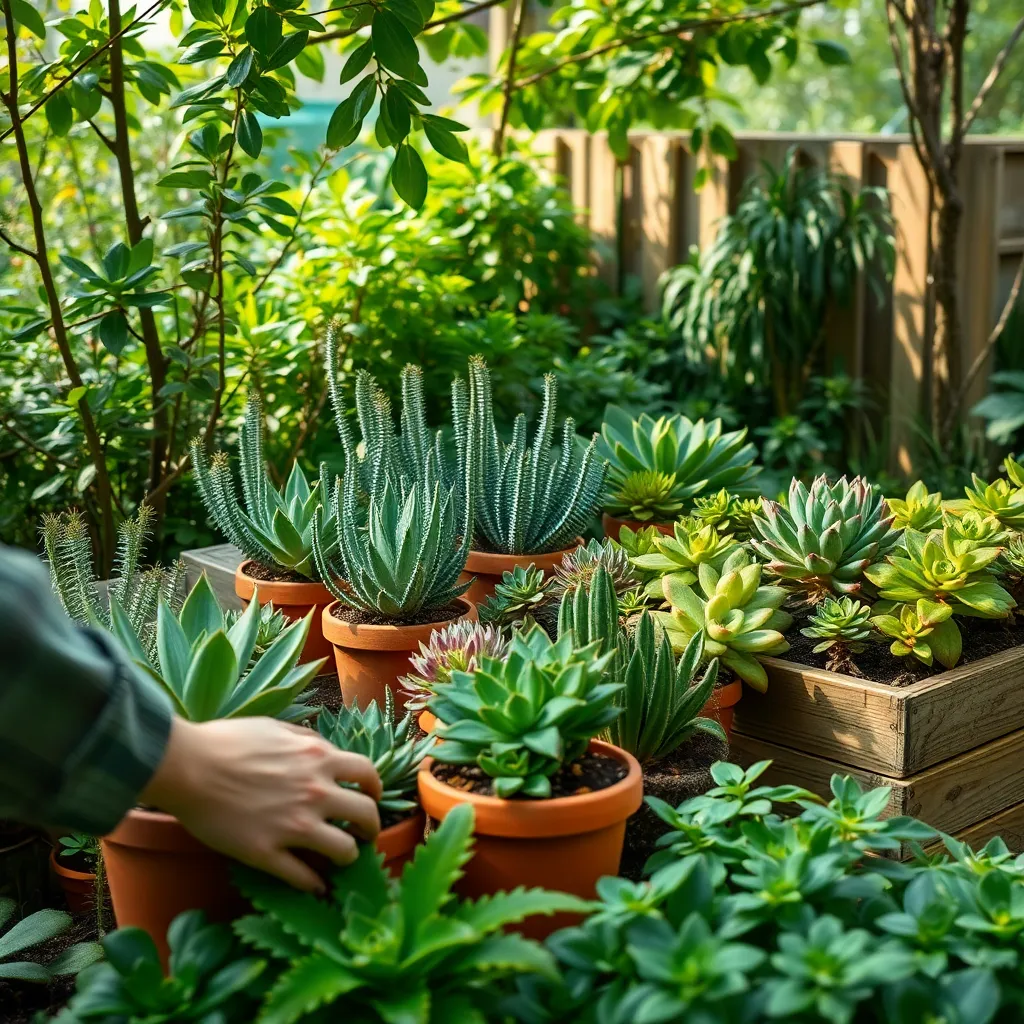
Shaded succulents require a delicate balance of water and light to thrive. It’s essential to ensure that these plants receive indirect light, which can be achieved by placing them near a north-facing window or under artificial grow lights.
Using the right soil mix is crucial for the health of succulents in shaded areas. Opt for a well-draining cactus or succulent mix with added perlite or pumice to prevent root rot, which can occur in low-light conditions.
Watering shaded succulents requires a careful approach to avoid overwatering. Check the soil’s dryness before watering; typically, a deep soak every two to four weeks is sufficient, depending on the humidity levels in your home.
Fertilizing can give shaded succulents a boost, especially in low light. Use a diluted, balanced fertilizer once in early spring and once in late summer to provide the necessary nutrients without overwhelming the plant.
Pruning can help maintain the shape and health of succulents that grow leggy in low light. Trim off any elongated stems or leaves to encourage a more compact growth habit and to prevent the plant from becoming top-heavy and prone to tipping.
Advanced gardeners can experiment with propagating shaded succulents to increase their collection. Leaf or stem cuttings can be placed in a mixture of sand and perlite, kept slightly moist, and provided with indirect light to encourage rooting.
Common Issues in Low Light
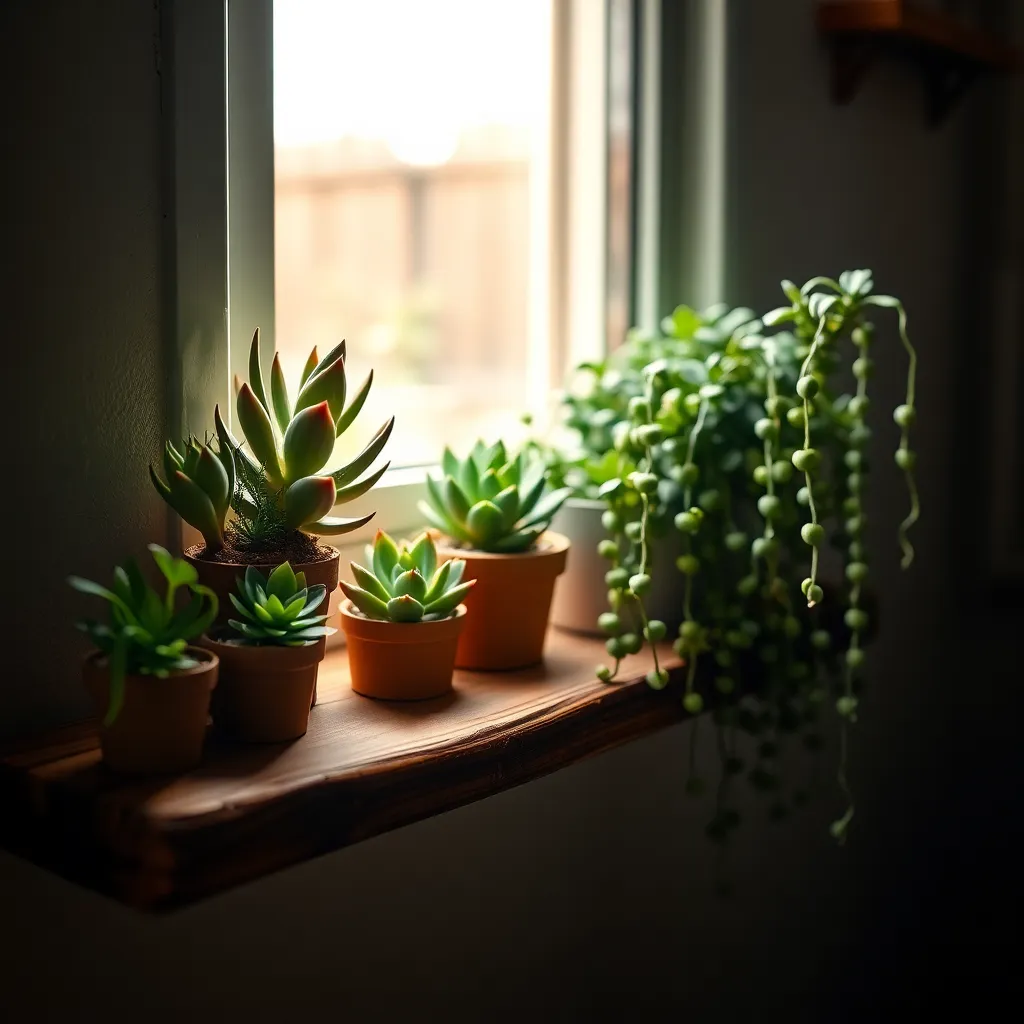
While succulents are known for their resilience, low light conditions can present unique challenges. A common issue is etiolation, where plants stretch toward the light, resulting in leggy growth and weak stems. To prevent this, rotate your succulents every few weeks to ensure even light exposure and maintain their compact shape. Consider placing them near a north-facing window or supplementing with a grow light if natural light is insufficient.
Inadequate light can also affect the color intensity of your succulents, making them appear dull or faded. If you notice this happening, try moving your plant to a slightly brighter spot or introduce a specific spectrum grow light to enhance color vibrancy. Remember to gradually acclimate your plant to increased light to avoid sunburn. This cautious approach will help preserve the beauty and health of your succulents.
Overwatering is another frequent problem when succulents are in low light, as the soil takes longer to dry out. To avoid this, use a well-draining cactus mix and ensure pots have drainage holes. Water only when the top inch of soil feels completely dry to the touch, which might mean less frequent watering than you’re used to. Observing these watering guidelines will prevent root rot and keep your succulents thriving.
Finally, pests like mealybugs can become more prevalent in low-light conditions where the plant’s defenses may be weaker. Regularly inspect your succulents for signs of infestation, such as cottony spots on leaves or stems. If pests are detected, treat them with a gentle solution of water and neem oil, applying it with a soft brush to affected areas. This proactive care will help maintain a healthy, pest-free succulent collection.
Enhancing Growth with Minimal Sun
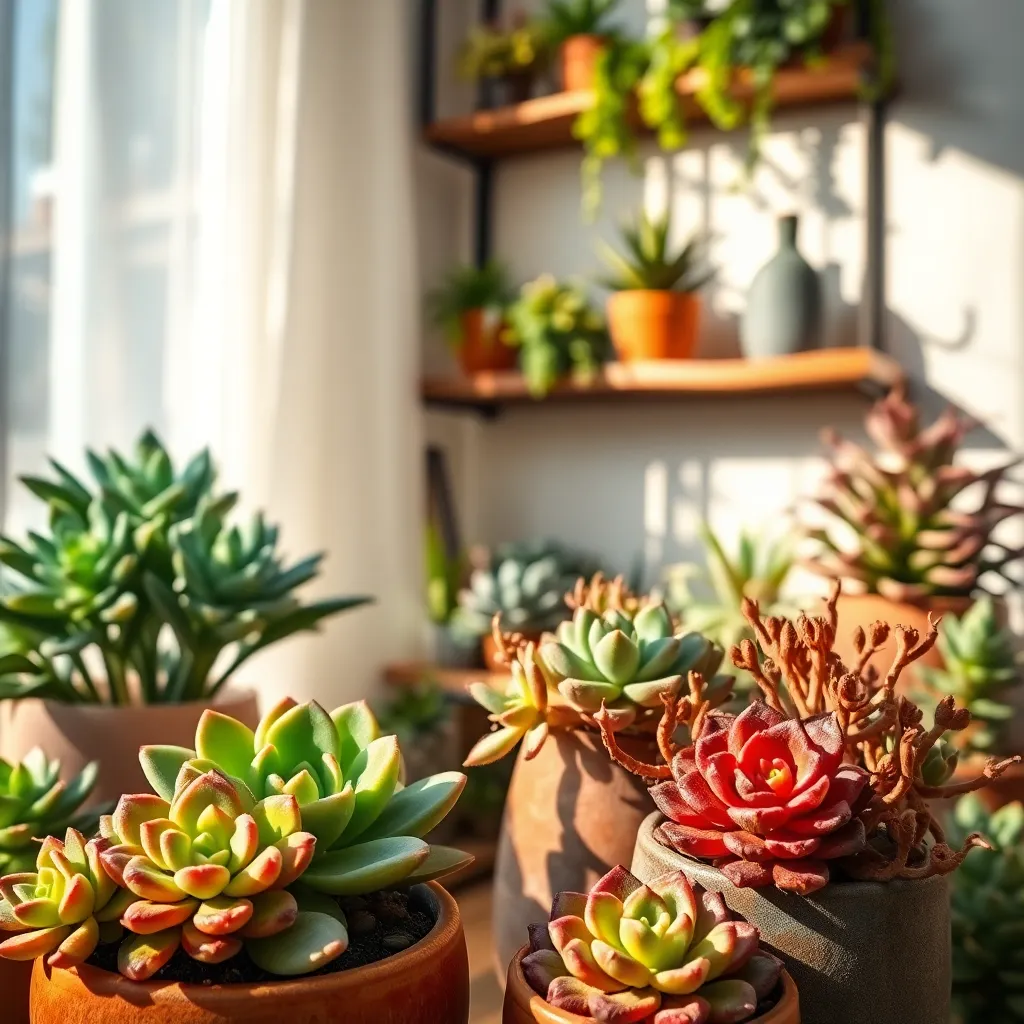
Creating the right environment is crucial for succulents to thrive with minimal sunlight. Start by selecting a well-draining soil mix, such as one designed specifically for cacti and succulents, to prevent root rot.
Strategically placing your succulents can enhance their growth even in low light. Position them near windows where they can receive indirect light, or use a sheer curtain to diffuse direct sunlight.
Water management is key to healthy succulents in low-light conditions. It’s essential to allow the soil to dry out completely between waterings, typically every two to three weeks, to avoid overwatering.
For those looking to boost growth, consider supplementing natural light with grow lights. LED grow lights can be particularly effective, as they can be adjusted in intensity and positioned to optimize light exposure.
Fertilization can also aid succulents growing in less-than-ideal light. Use a diluted, balanced liquid fertilizer once a month during the growing season to provide essential nutrients without overwhelming the plant.
Advanced gardeners might try rotating their succulents regularly to ensure even growth. This simple technique prevents plants from leaning or growing unevenly towards the light source.
Conclusion: Growing Success with These Plants
In the journey of nurturing relationships, understanding the dynamics that allow them to thrive, much like succulents in low light, is essential. We explored five key concepts: the importance of communication, the need for trust as a foundation, the role of empathy in understanding your partner’s perspective, the power of quality time in building connections, and the resilience that helps relationships endure challenges. These insights equip you to cultivate a love that flourishes, even in less-than-ideal conditions.
As an immediate step, consider practicing active listening with your partner today—truly hearing and understanding their thoughts and feelings without interruption. This simple yet powerful action can deepen your bond and pave the way for meaningful conversations.
Remember, relationships are ever-evolving gardens that require consistent care. Bookmark this article now so you can revisit these principles whenever you need a reminder of how to nurture your partnership.
Looking ahead, embracing these concepts can lead to lasting relationship success, empowering you to weather any storm together. May your love grow resilient and radiant, much like a succulent that thrives against the odds.

